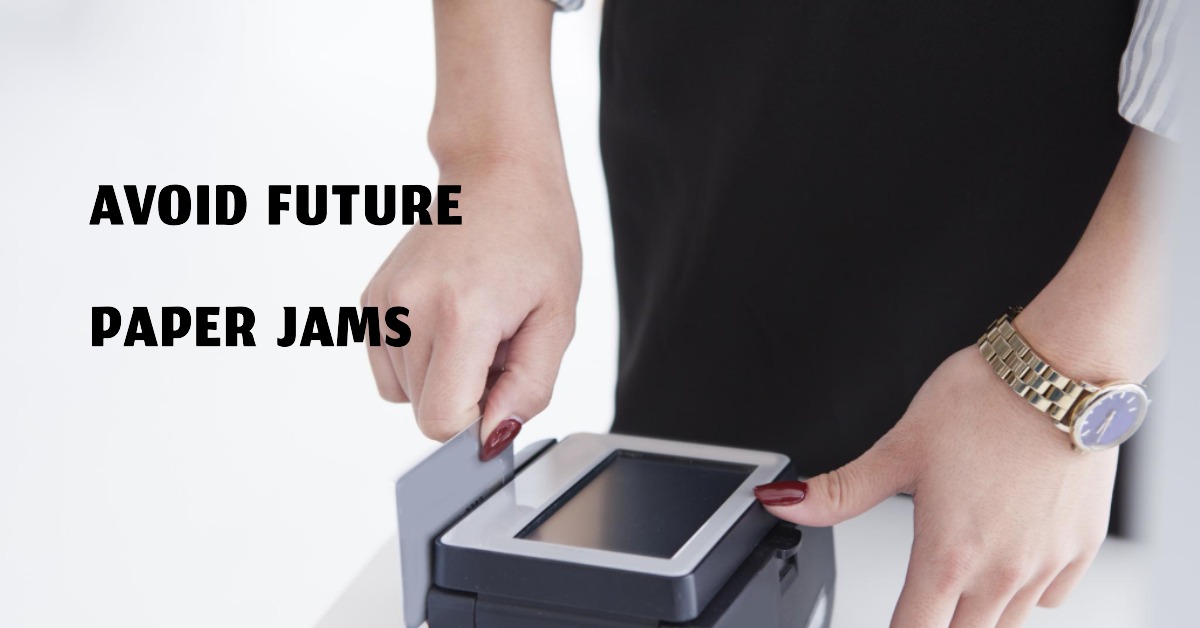Troubleshooting Printer: 8 Tips for Post-Paper Jam
Having trouble with your printer after a paper jam? Don’t worry, we’ve got you covered.
In this article, we’ll provide you with 8 essential tips to troubleshoot your printer and get it back up and running smoothly.
From removing paper fragments to updating drivers and adjusting paper settings, we’ll guide you through the process step by step.
So, let’s dive in and solve those post-paper jam issues together.
Check for Any Remaining Paper Fragments
Check for any lingering paper fragments by carefully inspecting the printer’s internal components. After a paper jam, it’s common for small pieces of paper to remain inside the printer. These fragments can cause further issues and even lead to additional paper jams.
To troubleshoot this problem, start by opening the printer and taking a close look at the paper path. Use a flashlight if necessary to spot any hidden fragments. Pay special attention to areas like the paper tray, toner cartridge, and fuser unit.
If you find any paper fragments, remove them gently using tweezers or compressed air. Be careful not to damage any delicate parts.
Clean the Printer’s Rollers and Feed Mechanism
To ensure optimal printer performance and prevent future paper jams, it’s essential to clean the printer’s rollers and feed mechanism regularly. Cleaning the rollers helps to maintain their grip on the paper, preventing the chances of misfeeds and paper jams. You can use a cleaning solution specifically designed for printer rollers to remove any dirt, dust, or debris that may have accumulated over time. It’s important to follow the manufacturer’s instructions when using the cleaning solution to avoid any damage to the rollers.
Troubleshooting common feed mechanism issues involves checking for any blockages or obstructions in the paper path, ensuring that the paper guides are properly aligned, and adjusting the paper tray settings to match the paper type and size being used.
Regular cleaning and maintenance of the rollers and feed mechanism will help keep your printer running smoothly and minimize the occurrence of paper jams.
Reset the Printer and Clear Its Memory
To fully resolve any lingering issues after a paper jam, you should perform a complete reset of your printer and clear its memory. Resetting the printer can help troubleshoot various issues and fix the printer’s functionality. It’s a simple process that can be done by following a few steps.
First, turn off the printer and unplug it from the power source. Leave it unplugged for about a minute to ensure that all residual power is discharged. After that, plug the printer back in and turn it on. This will initiate the reset process and clear the printer’s memory. Clearing the memory helps to eliminate any temporary data or settings that may be causing problems.
Update Printer Drivers and Firmware
To ensure optimal performance and compatibility, it’s essential to regularly update your printer drivers and firmware. Updating your printer software is crucial for resolving any connectivity issues you may encounter. Printer drivers act as a bridge between your computer and the printer, enabling communication and ensuring that the printer functions correctly. Outdated drivers can lead to errors and malfunctions, causing your printer to not work as expected.
Firmware, on the other hand, is like the operating system for your printer, controlling its functions and features. Regularly updating the firmware ensures that your printer performs at its best and remains compatible with the latest software updates.
Adjust Paper Settings and Tray Alignment
To ensure proper paper handling and avoid future paper jams, regularly adjusting the paper settings and tray alignment is essential.
Incorrect paper settings can cause paper jams, printing errors, and poor print quality. Start by checking the paper size and type settings on your printer. Make sure they match the size and type of paper you’re using.
Additionally, verify that the paper guides in the tray are correctly aligned with the paper. Misaligned paper guides can lead to skewed prints and paper jams.
If you frequently experience paper jams, consider cleaning the paper feed rollers as well.
Troubleshooting printer ink and common printer error messages can also be resolved by adjusting the paper settings and tray alignment.
Inspect and Clean the Print Head
Now, let’s dive into inspecting and cleaning the print head, a crucial step in troubleshooting printer issues after a paper jam.
Print head maintenance is essential for ensuring optimal print quality. Over time, the print head can accumulate dust, debris, and dried ink, leading to clogged nozzles and poor print output.
To begin, turn off the printer and unplug it from the power source. Open the printer cover and locate the print head. Gently remove the ink cartridges and set them aside.
Using a lint-free cloth or cotton swab, dampen it with distilled water or a recommended cleaning solution. Carefully wipe the print head nozzles to remove any buildup. Avoid using excessive force or touching the electrical contacts.
Once the print head is clean, reinsert the ink cartridges and close the printer cover. Plug in the printer and turn it on to complete the process.
Regular print head maintenance will help troubleshoot print quality issues and ensure consistent, high-quality prints.
Test Different Paper Types and Weights
You can test different paper types and weights to troubleshoot printer issues after a paper jam. Experimenting with different paper brands can help determine if the jam was caused by a specific type of paper. Some paper brands may have varying thickness or coating, which can affect how the printer feeds the paper.
Trying different paper sizes can also be helpful, as some printers may have trouble handling certain sizes. For example, if you typically use letter-sized paper, try using legal-sized or A4-sized paper instead. This can help identify if the jam is due to a compatibility issue with the paper size.
Contact Customer Support for Further Assistance
If you have exhausted all troubleshooting options and are still experiencing issues with your printer after a paper jam, it’s recommended to reach out to customer support for further assistance.
Contacting customer support can provide you with expert guidance tailored to your specific printer model and problem. They can walk you through additional troubleshooting steps that you may have missed or provide you with advanced solutions to resolve the issue.
When contacting customer support, be sure to have your printer’s model number and serial number ready, as this information will help them identify and address the problem more efficiently.
Customer support is there to assist you and ensure that your printer is functioning properly, so don’t hesitate to seek their help when needed.
Conclusion
In conclusion, troubleshooting printer issues after a paper jam can be efficiently done by following these eight tips.
- Check for paper fragments
- Clean the rollers
- Reset the printer
- Update drivers
- Adjust settings
- Inspect the print head
- Test different paper types
- Contact customer support if needed
By following these steps, you can resolve most problems.
Remember, as the saying goes, “An ounce of prevention is worth a pound of cure.” Stay proactive to avoid future paper jams and ensure smooth printing operations.

